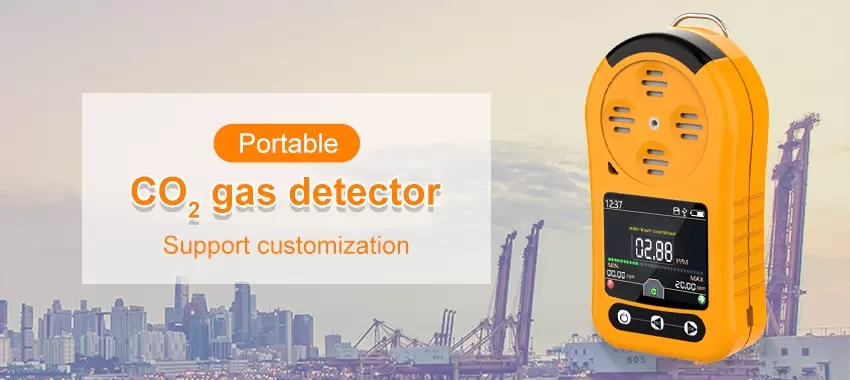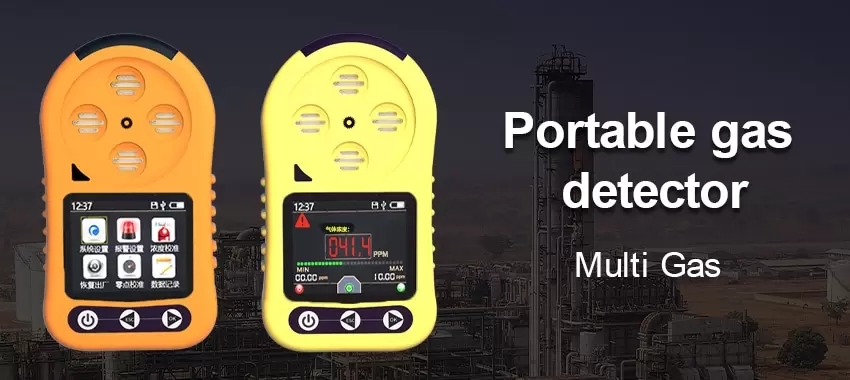Background:
Air quality is becoming an important environmental issue. Pollution can reduce the quality of the air we breathe, which can lead to health problems. For example, bad air can exacerbate allergies and respiratory problems such as asthma. In addition, certain everyday activities may release harmful gases, and in extreme cases, harmful gases like carbon monoxide can cause death. Therefore, gas sensors have attracted more and more manufacturers' interest. Gas sensing is not a new technology. Gas detection devices with integrated gas sensors are already used in defense and industrial security and form a highly regulated and mature market. However, the air quality problems faced by human society and the increasing awareness of environmental protection. New applications and market opportunities are created for gas sensors. Includes consumer products (such as smart homes, wearables, and smartphones), buildings, and cars (indoor and in-vehicle air quality monitoring).

The future of gas sensors:
2014-2021 gas sensor market revenue forecast, according to related reports, there are many factors driving the growth of the gas sensor market. Driven by the need for better energy management, gas sensors will experience rapid growth in the building market. The compound annual growth rate for the next five years is 13.6%, and the market revenue in 2021 is about 237 million US dollars. The medical industry is demanding high sensitivity asthma detection sensors, oxygen sensors for breathing control.
Consumer applications, such as smart homes, wearables and smartphones, are driving the development of new MEMS gas sensors. To reduce cost and power consumption, reduce size. The environmental protection market will grow at a CAGR of 19% over the next five years due to the desire for outdoor air quality control. The transportation market is mainly driven by oxygen sensors, and the future goal is to strive to reduce pollution from automobile emissions.
market development:
The consumer market is very attractive because it can generate a large market. Of course, this depends on user usage, product cost and technology maturity. Today, the smartphone industry has revolutionized the sensor industry, integrating a wide variety of sensors. Likewise, gas sensors can also be integrated into smartphones and wearable devices. It can monitor formaldehyde from furniture and even serve as a breathalyzer for police officers to detect drink-driving.
Three possible scenarios for gas sensors in consumer applications:
Realistic scenario: In the next few years, the "pace" of integrating gas sensors in smartphones will be slow, with only second- and third-tier smartphone vendors using gas sensors.
Optimistic scenario: Gas sensors were integrated into some mainstream smartphones in 2016 and will be increasingly common over the next five years. The situation depends on technology maturity and cost.
"Rollercoaster" scenario: In 2016, some mainstream smartphones integrated gas sensors, but a year later, gas sensors were eliminated due to no clear user demand. For example, the Samsung Galaxy S3 integrated a humidity sensor for the first time , but the Galaxy S4, released a year later, omits the humidity sensor.
Fragmented market trends:
Gas sensors have a wide range of applications, but each application has its own technical requirements. Such as the measured gas type, sensitivity, selectivity, response time, life and power consumption. Each application also has its own business requirements, including regulations, target prices, market maturity, and competition. Consumer Market: Gas sensors are integrated into consumer electronics. Includes smart homes, wearables, and smartphones. HVAC market: Gas sensors for indoor/in-vehicle air quality monitoring. Transportation Market: Gas sensors for vehicle exhaust gas measurement or heavy vehicle engine control. Medical market: Gas sensors for breath analysis in therapeutic care. Applications for the defense and industrial security markets. Environmental Market: Gas Sensors for Monitoring Air Quality and Pollution。

New entrants expect to gain market share:
The huge demand in the consumer market is very attractive. For such applications, sensors require good sensitivity, reliability, low cost, small size and low power consumption. MOS technology appears to be the best option in terms of cost and size for wearables and smartphones. However, as there are more and more sensors in smartphones, power consumption is becoming more and more important. Therefore, the sensor also requires very low power consumption. Also, the sensitivity of MOS sensors is not very good. The good news is that gas sensors based on NDIR technology have come a long way in reducing size. There is an opportunity to challenge the position of MOS sensors in consumer applications. At present, NDIR gas sensors have been applied in smart home products.
New entrants to gas sensors will bring innovative approaches based on MEMS and optical integration platforms. Adopt the fabless model and rely on the foundry to achieve mass production. As such, gas sensors bring new business opportunities to semiconductor and MEMS foundries. In addition, semiconductor outsourcing packaging and testing foundries can also provide innovative packaging technologies for gas sensors.
 : +86 155 8830 2704
: +86 155 8830 2704 : jxdziot@gmail.com
: jxdziot@gmail.com
